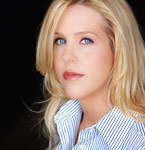Kristin Luck
The summer months, for many of us, doesn’t just mark the beginning of a change in the weather. July marks the official end of what many of us in the industry have affectionately termed “spring conference season.” But never fear! It all starts again in September with “fall conference season”, which includes over 20 global, regional and local events in just three short months.
Let’s face it. There are a LOT of conferences in this industry and every year we add more, pushing into the once-off-limits summer months. Both existing and newly formed industry organisations seem to add another insights conference every year . There are now targeted conferences that focus on everything from client-side researchers to emerging research technologies.
I’m sure I speak for many of you when I say I am tapped out on the number of conferences I can attend. So much so that, when Leonard Murphy approached me about the launch of his Insight Innovation Exchange (IIEX), my gut reaction (albeit a visceral one…sorry Lenny) was HELL NO. For those of you who haven’t met Lenny, he’s one of the nicest and most connected folks in research. Telling him no is no small task. Which is why I ended up in Philadelphia a few weeks ago, chairing a speaking track for IIEX North America.
IIEX faces many of the same challenges as other industry events: a lack of unique subject matter (big data, oh please…not more big data!); overlap in conference content; lack of diversity in speakers; and use of the stage as a sales platform. Queue Lenny’s ability to put a unique spin on what can be the usual coma-inducing subject and speaker lineup … and enter IIEX’s Insight Innovation Competition which pitted startups and new research methods against each other in five minute pitches. What’s so cool about the competition? Well for one, you’re hearing from individuals who otherwise would have no platform to present new thinking to the industry. From “Pop Up CLT” to nano-survey technology, even the most jaded researcher got excited about these presenters. RawData (mobile metering and surveying) and RIWI (nano-survey technology) emerged as the victors.
If IIEX, with no previous track record in the conference space, can curate some of the most original content of the year (SoLoMo, for instance, or Futurist Workshop, anyone?) perhaps this should serve as a wakeup call for other conferences that are struggling to retain market share. This begs the question … how do we redesign the research conference? How do we present opportunities for cutting edge content and emerging methods? How do we curate a more diverse pool of speakers?
What isn’t working:
- Insulated planning. I’ve sat through more than a few conference planning meetings where content and speaker curation was determined solely by a small, generally not very diverse, group of committee members. The solution? A call for speakers is paramount to the planning process. Not enough submissions? Reach out to groups and lists that can help promote your call on their blogs and social media sites. Enlist help from contacts outside of the industry- they may know of individuals who can speak to relevant emerging research methods and technologies from a unique point of view.
- Pay to play. There are a growing number of conferences with the reputation of curating speakers based solely on two criteria: 1) Are you a client side researcher? 2) If the answer to 1 is no, will you pay to speak? If the answer to 1 and 2 is no, you can forget about presenting. This is a shame. Speaker curation should be based solely on content and speaking ability. Good content and dynamic speakers = happy, engaged attendees. By excluding researchers that either have chosen to make a career on the supplier side or can’t afford to pay thousands to present for 30 minutes, we’re quite possibly excluding the very types of presenters and companies that will move our industry forward (case in point, IIEX’s Insight Innovation Competition).
- Speaker curation. I continue to be, at times quite publicly, frustrated with the lack of diversity on conference speaking rosters. Every keynote publicised in a recent conference flier I received is a white male. White men make great speakers. But so do women and people of colour. A study conducted by MIT found that diversity leads to better products, services and industry performance. Conference hosts often attribute a lack of diversity to a “pipeline problem” – that there simply are not enough qualified women or people of colour who wanted (or were qualified) to participate. There’s a solution that addresses these issues, which has been outlined by the organisers of The Lean Startup Conference: meritocratic selection. Speakers are picked based on who has the best story and who is the most engaging presenter. Meritocratic selection is driven by a handful of principles including a transparent process, blind selection, proactive outreach and enlisting help. More on The Lean Startup’s approach to speaker selection can be found online.
- Presentation vetting. Conference organisers should be closely reviewing and pushing back on presentations that smack of overt sales pitches. Speakers, you are speaking to educate. By virtue of your presence on stage, you’re selling. Don’t push it. Focus your content on clear, actionable takeaways for session attendees. This is a teaching, not a selling, opportunity (unless, of course, you’re paying to speak….to which I say, go for it…..your sales pitch is paid for).
As we gear up for fall conference season (and summer now, apparently), I encourage you to examine the speaker lineup with a critical eye. Conferences provide an unmatched opportunity to learn and connect in our industry. Let’s all work together to make our collective voices heard, and make sure that our attendance at a growing number of events is truly pushing our industry forward. See you at an event this fall!




8 comments
HI RRCG-E&Os and others,
As the Events Manager at ESOMAR I would be more than happy to discuss any of these comments or ideas, – you can always reach me on rhiannon@esomar.org or +31 20 6642141
Cheers
Rhiannon
Interesting how one commercial conference seems to be singled out here as the only conference that does not fail to satisfy conference goers. If I remember correctly the mentioned competition is SPONSORED and not cheap when I remember the price tag. There may be a lot wrong with the conference model but I don’t believe this one fixed it.
It also does not seem to me that the selection criteria for speakers was much different since I was very much the same faces at iiex than at previous shows. – Or why were many of the exhibitors up on the speaker stage? Surely because they paid for it.
So while there may be some truth (frustration) in the above I think it is also read with a pinch of salt – and should maybe be moved to the sponsored section if there is one.
Dear RRCG-E&Os,
Insulated planning. I think it’s important to make a distinction between MR Member Organizations (ESOMAR, MRA, QRCA, MRS) that put on conferences and Event Businesses that put on MR conferences (IIR and others).
I’ll speak to my personal experience with the former as I’ve no first experience from organizing side of the latter.
Conference committees of member orgs are staffed by member/volunteers. Generally these people are also working their consuming day jobs (running companies, research departments, and projects) and spending extra time to go through a peer review process. In my personal experience, everyone contributes to the best intentions and gives as much time as the vagaries of their day jobs’ schedules allow. Sometimes the ‘insulated planning’ is a byproduct of a volunteer committee that’s got the bandwidth to curate submissions, but not necessarily organization a new conference submission process.
Presentation vetting. While I don’t agree with your 90% estimate, I do agree that there could be stronger vetting to weed out the pure sales pitches (or a least put them in a session that’s basically labeled SALES PITCHES HERE!). The challenge, and I can attest as someone who probably has not hit every presentation delivery deadline, sometimes they come in last minute. Sometimes, a sponsor goes too far and the organizers may only push back so much.
Could planning be more creative? Could MR conference orgs go SXSW style? Yeah, though you get a lot of sales pitches that way too. Could presentations be better vetted? You bet.
My last comment is that if you truly believe the system is broken, and you care about improving things – get involved in any of the numerous avenues/orgs/events and be a part of the fix.
Steve August, thank you for clarifying.
What do you say to the other accusations – for ESOMAR or others:
Insulated planning – there is way too much of this and is probably my biggest criticism of their approach. Wisdom of crowds for selection anyone? It worked for NewMR.
Presentation vetting – this is critical.
I say 90% of the presentations I sit through are crap. The system is broken. Please fix it.
Kristin – I hear ya! I missed IIEX, as much as I really wanted to be there, because I was already scheduled for MRA Annual the week before and ESOMAR 3D the week after. I was not able to do three straight weeks on the road, especially factoring the cost of the marriage counseling that would have inevitably ensued. It definitely seems like the MR conference circuit has expanded from mainly in the fall to the whole year ’round.
I guess there’s something to be said for more choices, more learnings, but fatigue definitely starts to sink in.
As someone who is currently part of the ESOMAR Qual committee, and has been on one other in the past, I’d like to address some of the comments on bias. In my experience, at least on ESOMAR conference committees, there is no bias other than what papers are the most interesting, relevant to the theme or themes, and ultimately judged to be useful learning for attendees. In my limited experience, age/gender is not considered in the selection of a paper. The committees I’ve been on may look at balancing out regions if there’s too much concentration from one country. And there is a desire to have end clients involved. But even with these considerations, it comes down to what the committee deems are the strongest submissions.
So true. Kristin, salute you for a courageous blog. Many conferences are just there to print money or become an advertising platform for established players. Several times, personally, I have seen young speakers or speakers from places other than europe or america face a bias. Often jury members are so biased towards the established big names that they do not even wish to read synopsis of new aspiring researchers. Having said that, there are few jury members who do have a genuine interest in bringing up new ideas.
I agree wholeheartedly and what better place to say it than the ESOMAR blog?
If you look at ESOMAR they fail on some of the criteria:
Insulated planning – there is way too much of this and is probably my biggest criticism of their approach. Wisdom of crowds for selection anyone? It worked for NewMR.
Pay to play – ESOMAR have the right balance here. Peer review is more valuable than depth of the pockets.
Speaker curation – as a white male I don’t get it … surely it should just be the best speakers, regardless of gender, age or colour?
Presentation vetting – this is critical.
I say 90% of the presentations I sit through are crap. They system is broken. Please fix it.
Bang on. I sometimes feel I go overboard in NOT mentioning my company name to the point where people ask me what company I used to produce my data. And yet I can’t speak at some events because I’m a supplier who is supposedly only there to pitch their services. I’m the first one to start tweeting about break-time and dessert when a speaker becomes a salesperson. Check my tweets after speak… if you dare.
And I’ve yet to be on a panel that is 50% or more non-white male. There’s a bigger world out there than the current MRX C Suite. We ought to take advantage of it. Yes, I count because counting is what I do. 🙂